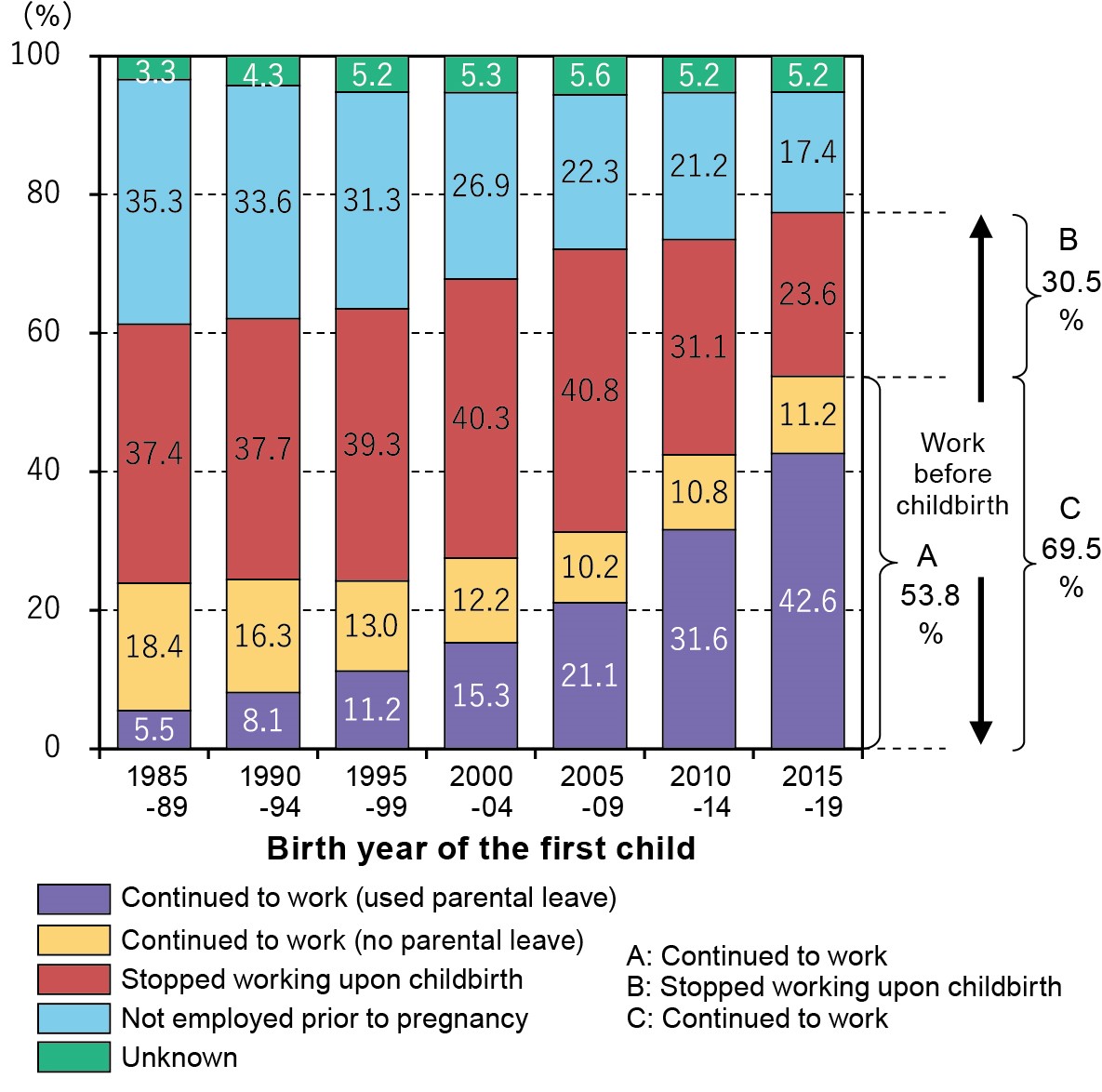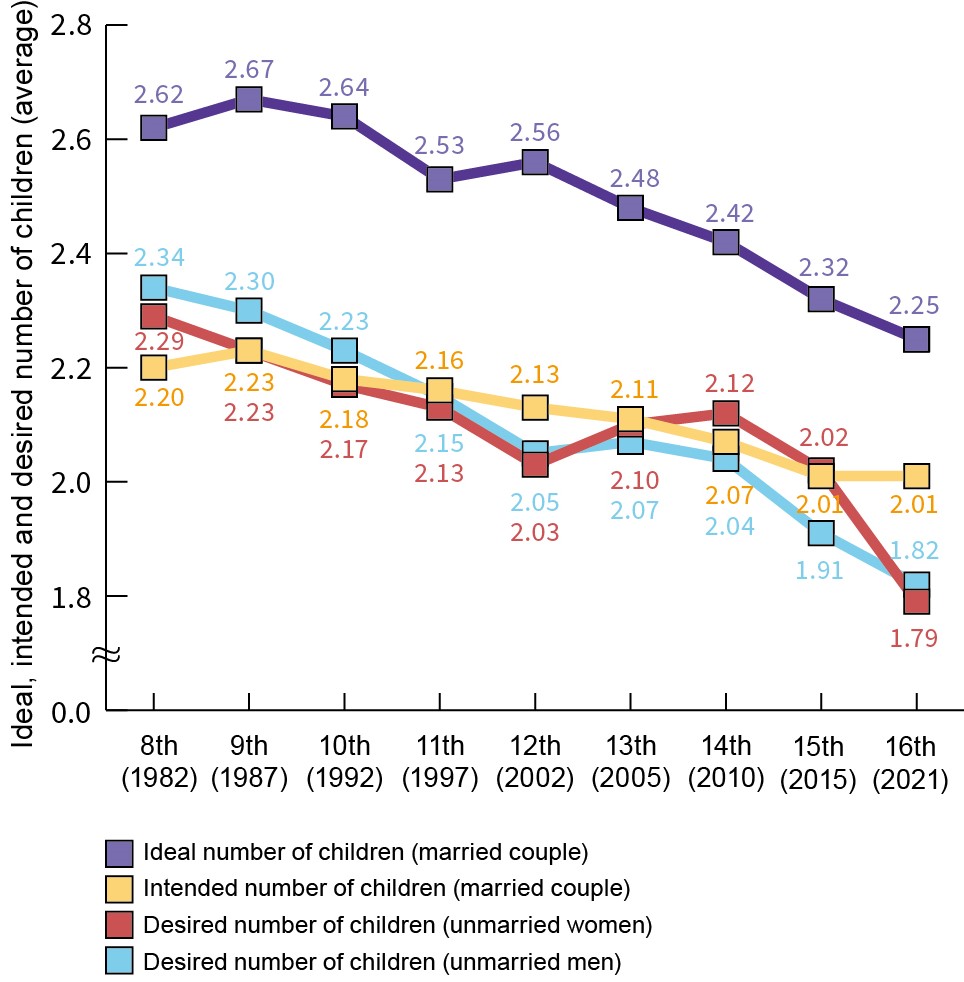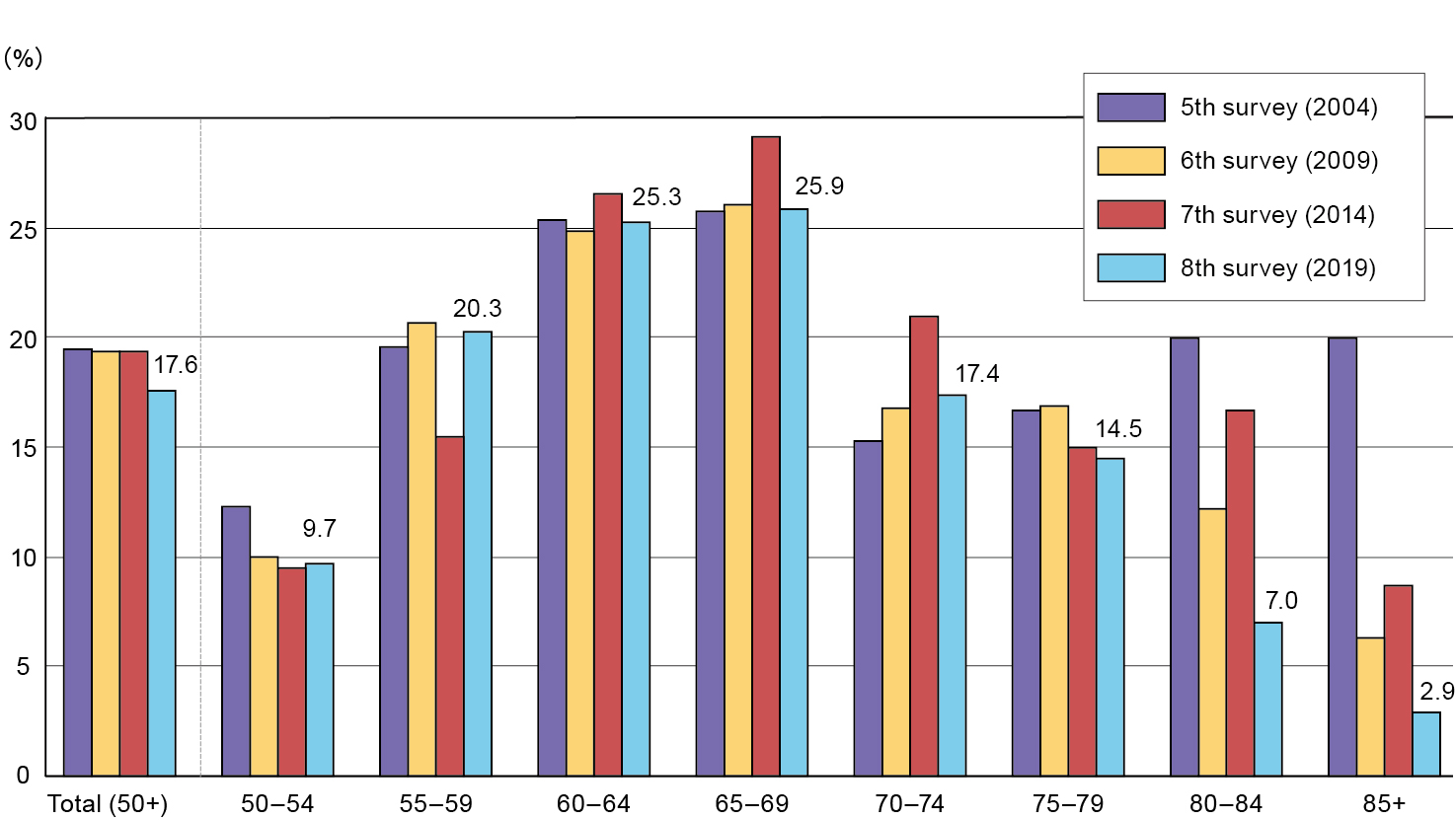|
●Annual Population and Social Security Surveys (general statistics)
The National Institute of Population and Social Security Research conducts nationwide surveys (referred to as Annual
Population and Social Security Surveys) on five different themes. The results of each survey are used as basic data for
policy making by national and local governments, and are also widely used in various fields.
|
 |
| The National Fertility Survey | ||
|
The National Fertility Survey is a nationwide survey conducted around every five years in order to investigate the current state of and issues related to marriage, childbirth, and childrearing in Japan. It consists of a survey targeting married couples and another one targeting unmarried individuals. Accompanied by the continuing trend of low fertility rate in Japan, population decline, population aging and changes in people’s lifestyles all infl uence the future of Japanese society. One of the important purposes of this survey is to understand the state of low fertility rate and to explore its causes. The survey asks unmarried individuals about their willingness to marry and their lifestyles, and married couples about their willingness to have children and their fertility behavior, as well as their work and child-rearing environments. By doing so, the survey depicts changes overtime and identifies new issues through comparison with previous surveys and across diff erent sociodemographic characteristics. The results of this survey are used as reference material to set the future fertility rate in population projections. In addition to being used to evaluate policy targets, such as in the General Principles for Child-Related Measures and the Basic Plan for Gender Equality, the results are also used to show the state of and issues related to low fertility for many offi cial reports, such as the Annual Health, Labour and Welfare Report, the White Paper on Children and Young People, and the White Paper on Gender Equality, as well as materials of various policy councils and by the media.
|
| The National Survey on Family in Japan |
|
Accompanied by low fertility rates and population aging, the family in Japan is undergoing major changes in its structure
and functions, including the increase in dual income families and single-person households. The National Survey on Family
in Japan examines the current status and changes in functions of the family, such as childbearing, child-rearing, financial
support and caring of elderly parents, as well as the factors behind these changes. As a comprehensive survey of families
and households, this survey offers valuable data, which are used as basic references for drawing up various policies.
●Changes in the percentage of those who agree and disagree with ideas on gender roles, by survey round
The attitude toward gender roles has changed over the past 15 years, and it has become clear that there is increasing support for the equal sharing of
housework and childrearing in particular.
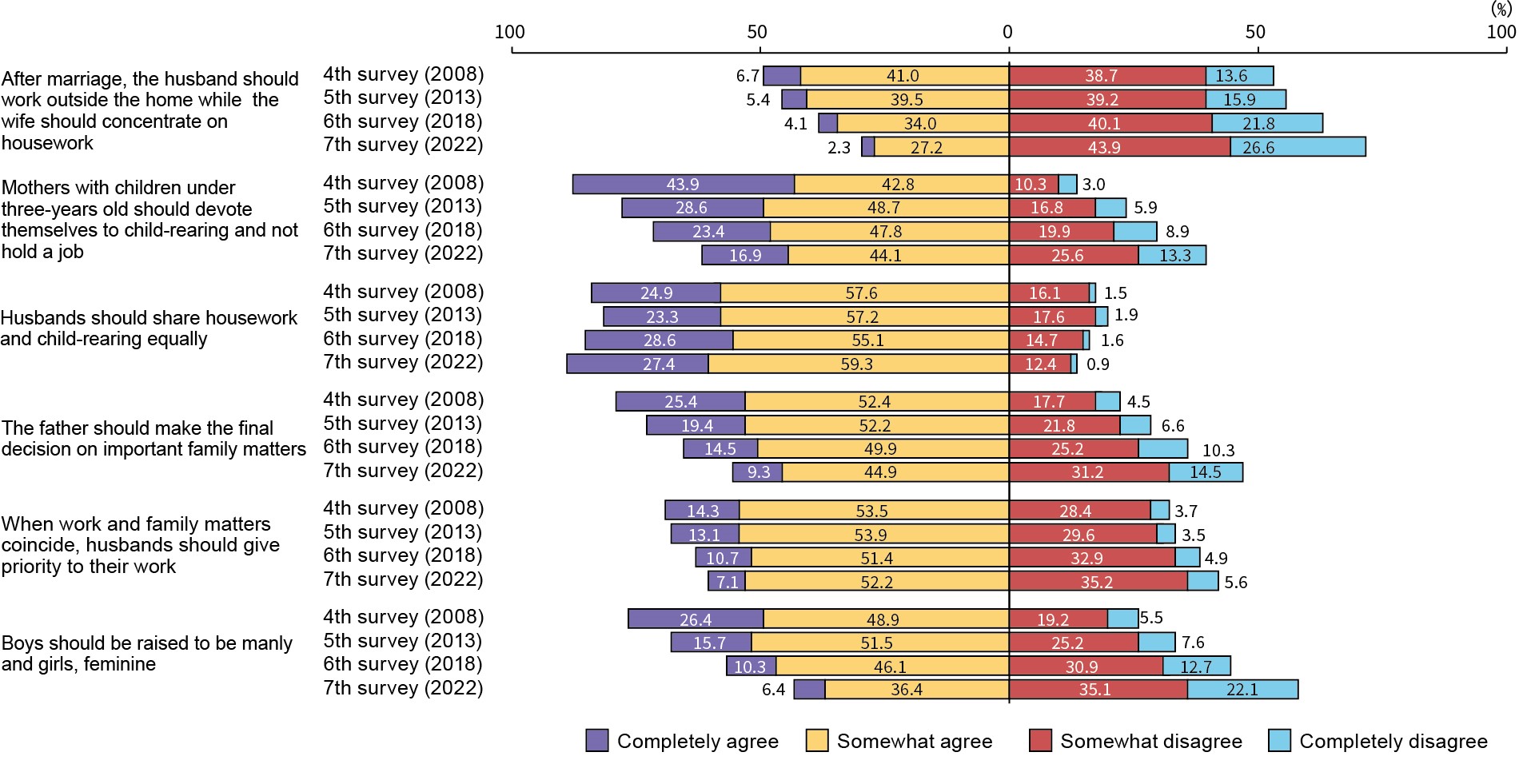 |
| The National Survey on Social Security and People’s Life | ||
|
Japanese society is undergoing population ageing and changes in household structures at an unprecedented speed.
In order to maintain the long-term sustainability of our social security system, it is necessary to implement a series of
reforms while also keeping in mind a delicate balance of self-help, mutual-help (by family members) and public help.
This national survey aims to understand the challenging living conditions people face, and how they cope with them
by supporting each other ? among family members and within communities. The survey results have been used as
indicators in the General Principles for Child-related Measures and the White Paper on Children and Young People 2024.
|
| The National Survey on Migration |
|
The National Survey on Migration is conducted
to obtain fundamental data on the trends
and prospects of the geographic mobility
of the people living in Japan. The survey
provides detailed data on individual migration
experiences that are not obtained from other
governmental statistics. The survey consists of
retrospective questions on place of residence
at major life events (e.g., birth, completion
of school, first job, marriage, and so on), the
reason for moving to the current place of
residence, and prospects of residence 5 years
ahead. The results are used in refining regional
future population projections in Japan and
examining regional revitalization measures.
The results of the 9th National Survey on Migration, conducted in July 2023, show that the people’s mobility, which had been on a downward trend, increased slightly partly due to the effects of COVID-19. The percentage who responded that COVID-19 affected their decision to move was 0.9% overall, with a relatively high percentage of them answering, “I moved although I hadn’t planned to.” It was also found that 5.1% of all respondents “live in multiple locations.”
|
●Percentage of those who moved from and then returned to
the prefecture of birthplace (The 9th Survey, 2023)
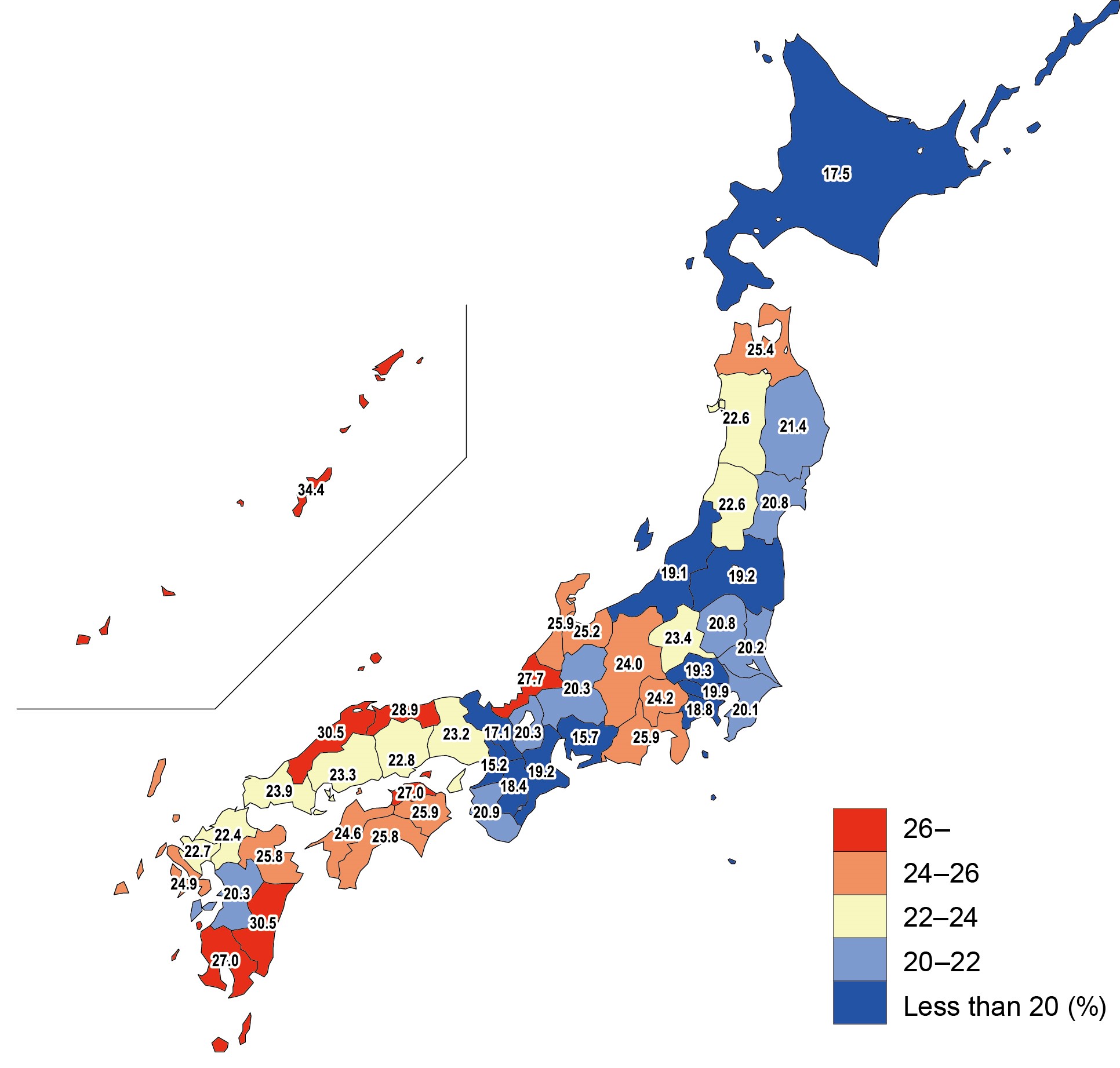 |
| The National Survey on Household Changes | ||
|
The structure of households in Japan is undergoing significant changes. These changes include not only the expected
decline in the number of total households, but also the increase in one-person households, couple-only households,
and single parent households. The National Survey on Household Changes attempts to capture the detailed process of
formation, expansion, compression and dissolution of households. Such data on household dynamics are difficult to find
in other surveys, and the results are utilized to project the number of households in the future and for policy purposes.
(*) Empty nest refers to a household which consisted only of parents after their child(ren) left home to work or to get married, etc.
|




